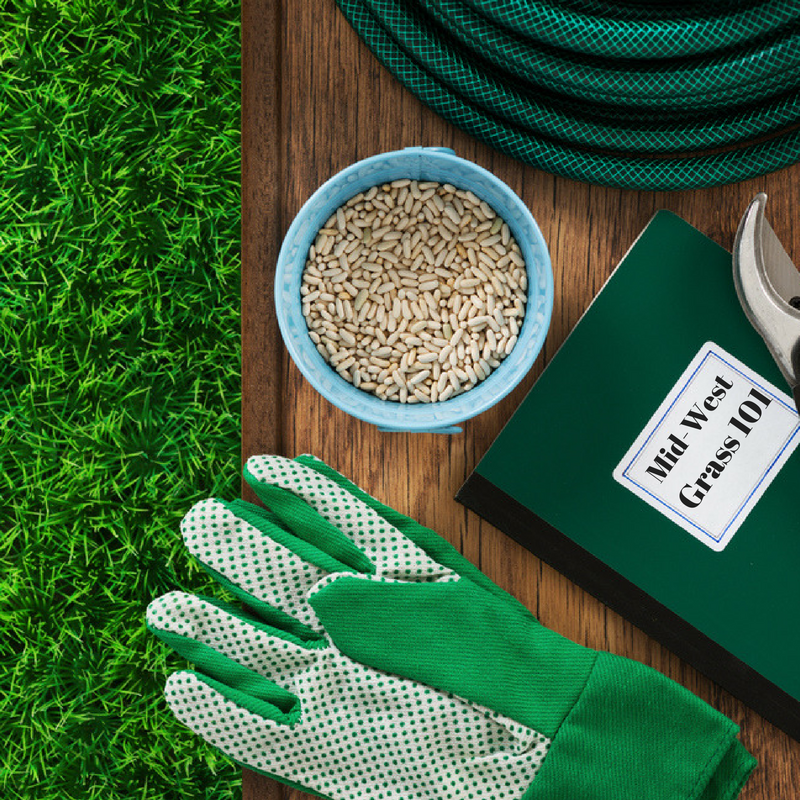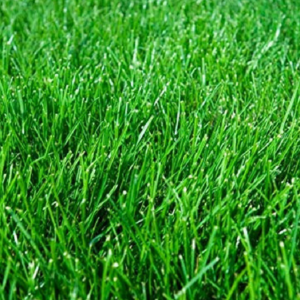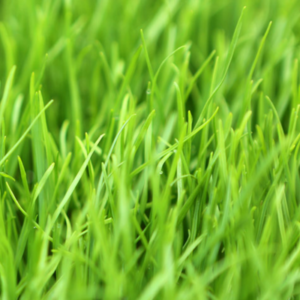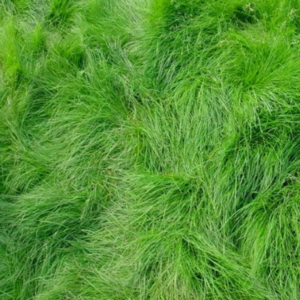
If you live in the Midwest then you’re likely used to drastic changes in temperature and humidity between seasons. Unlike the retired folks traveling south during the winter, the grass you plant will have to tough out the cold. There are many different types of grasses available to grow a lawn, but some do significantly better than others in our region. In the Midwest, cool season grasses are the way to go.
Due to our erratic seasonal differences in temperature and humidity, Midwest lawns require grasses that do well in cool climates.
Kentucky Bluegrass
Kentucky Bluegrass is most likely the best-known cool season grass. It grows exceptionally well in areas like the Midwest, that experience a longer cool season. It’s known for its hardiness and ability to spread out, covering bare spots nicely. It prefers a sunny area and requires irrigation during hot spells to keep it from going into a dormant cycle.
One tradeoff is the root system of Kentucky Bluegrass is very shallow. Because of this, it doesn’t withstand droughts very well. Their root system will go dormant during extreme conditions of either hot and dry or cold. They will come back if given intermittent watering during dry spells and will green up every spring after a cold winter.
- Shade tolerance: poor
- Planting: seed or sod
- Mowing height: 1 1/2″ – 2 1/2″
- Water: needs regular watering, will survive droughts by going into a dormant state.
- Fertilization: needs regular fertilization
- Maintenance: low
- Introduced by: colonists that brought it from Europe.
Ryegrass
Perennial Ryegrass
Perennial Ryegrass is known for its super fast germination rate and is often used as a temporary ground cover. It can also be used as a good overseed to green-up lawns when their warm season grasses go dormant. Perennial Ryegrass will not survive the summer heat in the Midwest by themselves.
This grass adapts well to moist cool areas where temperatures aren’t extreme on either end of the spectrum. Ryegrass requires the most maintenance out of grasses in the Midwest. You’ll be looking at extra management time and money for Ryegrass in regards to mowing, watering, fertilizing, and pest control.
Being the least tolerant to drought, Ryegrass requires frequent watering yet also requires more mowing as well.
- Shade tolerance: good
- Planting: seed
- Water: needs regular watering, but will survive droughts if not for extended periods
- Mowing height: 1-1/2″ – 2-1/2″
- Pests: gray leaf spot, leaf spot, billbugs
Red Fescue
Red Fescue is a grass that’s used in cool, shaded, low maintained areas like campsites, resorts, and cabins where there is a low desire to mow frequently, water, and fertilize. These grasses do well in shady, cool areas and will survive in these places much more successfully than other grasses. This type of seed is commonly added to bluegrass seed mixes. The grass looks nice even when it’s not mowed frequently. Red Fescue can often be seen lining long driveways to cover a large area that isn’t necessarily the main part of your yard.
This grass requires very low maintenance and doesn’t need much fertilizer or water at all. It’s recommended to cut this grass at a high mowing level.
- Mowing: Mow at 1-1/2″ — 2-1/2″ or keep unmowed as a groundcover.
- Fertilizing: Fertilize during the period of active growth (March – June; October – December).
- Planting: Seed at 3.5 – 4.5 lbs. seed/1000 sq. ft.
- Irrigation: A low to moderate amount of water is required. Water 1 — 2 times/week during the warm season; red fescue can go dormant in the summer if watered too infrequently or if no water is available.
Let our experts at GreenTech Lawn & Irrigation take care of keeping your lawn watered and happy!

